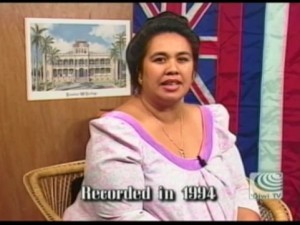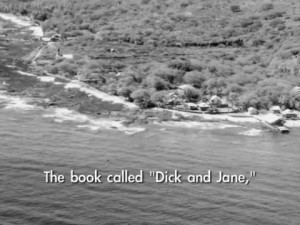Educators gathered for the first Culture-Based Education Conference that was recently held at the Convention Center to learn a new-old way to approaching education. Their goal is to integrate thousands of years of education in this 21st century.
“It was time for us to actually get a coference going because the momentum around culture-based education has really been growing, both in terms of Kamehameha as well as our DOE partners,” says Dr. Walter Kahumoku III, who is Director of Kauhale Kīpaipai at Kamehameha Schools, Kapālama.
Partnering with Kamehameha Schools are The Office of Hawaiian Affairs, The Native Hawaiian Education Council and The University of Hawaiʻi systems, to name a few. Hoʻōla Aʻe I Nā Pualei was the theme for this yearʻs conference, which means Lifting our Learners to Newer Heights.
“It’s a chance for all of us to have some pretty serious discussions about educating Hawaiian students,” says Walter. “Hawaiian education in general and where things are going at the federal, state and local levels.”
These organizations and their community participants set sail into the vast open ocean of culture-based education or CBE through workshops that will navigate them successfully into the future.
“They have practitioner folks who are here like Chad Babayan who is exploring the star systems as well as things like these large panels set up to talk about things like organizations who are doing CBE all the way through the public policy,” Dr. Kahumoku III continues.
Sitting one of the panels was Dr. Keiki Kawaiʻaeʻa, who is Director of Ka Haka ʻUla ʻO Keʻelikōlani, College of Hawaiian Language at the University of Hawaiʻi at Hilo. “Our Hawaiian cultural practices are ways of learning and knowing and teaching is actually based on a legacy kind of model to become a productive, active, contributing, happy member of the larger community. So It’s a larger more holistic view of looking at the purpose of education to serve community.”
To relate this back to our setting here in Hawaiʻi, Dr. Kawaiʻaeʻa and other inspirational teachers reconstructed two teaching frameworks unique to Hawaiʻi students known as Nā Honua Mauli Ola and Moenahā.
“So one is really looking at the big umbrella of what is education for us and how do we address that. The other is providing those tools with teachers of how to do that in the classroom and I think Moenahā offers that not only for our keiki Hawaiʻi, but offers that from that whole P-20 and beyond spectrum,” says Dr. Kawaiʻaeʻa.
“I think for me, being a career tech ed educator, I don’t always think that I’m a part of the educational system but I am,” says participant Mark Kunimune, a Program Director/Department Chair for Kapiʻolani Community College’s Emergency Medical Services Department. “Most of us who are in career tech ed, we’re practitioners so we know our content really well but we really haven’t been trained on how to deliver the content so this will give us strategy- structure and strategies.”
“For others, who are interested in sharing their ʻike, sharing their knowledge, this is a great venue to be able to share in a much more open public setting that celebrates the work that they’ve already done,” says Dr. Kahumoku III pleased with the outcome.
According to Mark, this conference couldn’t compare to all the others that he’s been to. “I came to this one because it’s cultural-based and you know, Hawaiian is the host culture here and I think one of the most important things in sustaining the islands is to have everyone, everybody understand the host culture. I think to bring the culture back, it’ll be through education.”




